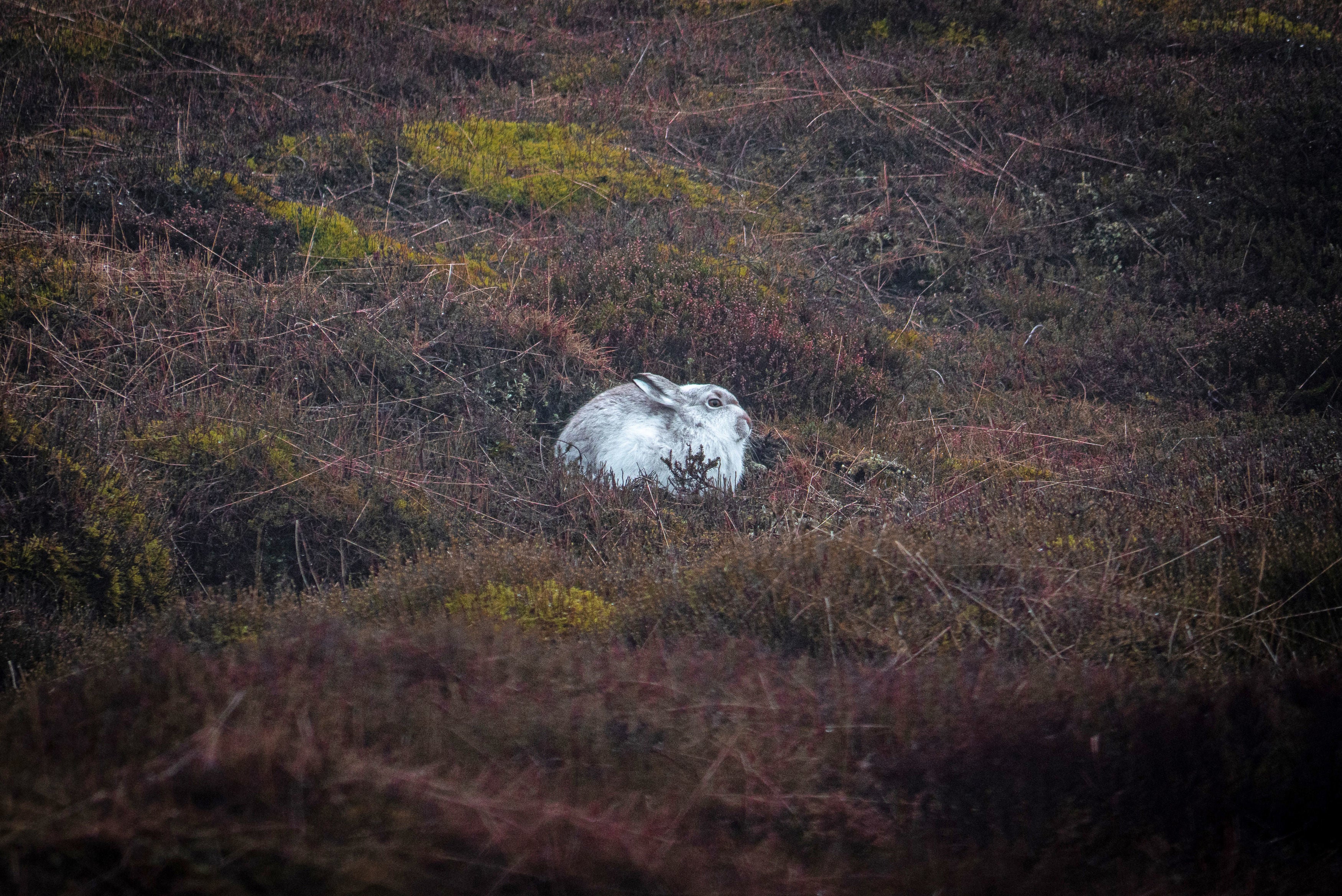Peak District mountain hares ‘more abundant than previously thought’
Conservationists hail ‘welcome news’ for species threatened by road traffic, climate change and disease

The Peak District’s population of mountain hares may be higher than estimated, according to a groundbreaking nocturnal count of a species feared to be under threat.
Between two and five times as many hares may be living in the national park than previous headcounts suggested, according to the early findings of a new survey.
The Game and Wildlife Conservation Trust (GWCT) which led the research, hailed the “welcome news” but said its results were ““very much preliminary” and long-term monitoring was needed to aid conservation efforts.
It has asked gamekeepers to count hares across 16 grouse moor estates in the Dark Peak area of the park.
Mountain hares, whose coats are famed for turning white over the winter months to match their surroundings, are native to the Scottish highlands but were wiped out in England during the last Ice Age.
The species was reintroduced onto shooting estates in England in the mid-1800s and now survives in the country only in the Peak District.
The GWCT’s research involves counting the numbers of hares seen along sections of land at night.
The method developed in Scotland with the James Hutton Institute and NatureScot as a more reliable technique for tracking hare numbers than those previously used.
Dr Nick Hesford, an ecologist the GWCT and lead author of the study, said the number of hares recorded by gamekeepers may be equivalent to a population density of around 52 to 126 mountain hares per square kilometre.
He added: “This is similar to the densities recently recorded in their core range in Scotland and between two to five times higher than the most recent estimates at other sites in the national park.
“The threats of traffic accidents, the isolation of the Peak District population, disease and climate change remain, but this survey is welcome news for the species.
“Although we only have data from one year of surveys so far, the adoption of this new methodology in the Peak District is a breakthrough for the population, and it is our hope this survey continues to help conservation efforts in the future.”
Dr Hesford said the hare population was likely benefitting from grouse moor keepers’ work aimed at boosting numbers of red grouse. This includes heather burning, which encourages production of new young shoots for the hares to eat, and control of predators, such as foxes and stoats.
“Because of the way in which grouse moors are managed, even in the face of climate change, it’s likely these areas – provided they are managed in the same way – will provide habitat for mountain hares,” Dr Hesford added.
Climate change is also thought to be a major threat to the long-term survival of the mountain hare population in the Peak District. According to the GWCT, global warming has cut short the period they use their white winter coat to camouflage themselves against the snow - making them easy prey for predators.
Richard Bailey, Peak District Moorland Group co-ordinator, who helped arrange the surveys, said: “Mountain hares are predominantly nocturnal animals, so it makes sense that the night-time counts are providing more successful and reliable population estimates than daytime counting.
“This population of mountain hares has survived thanks to the habitat management and predator control undertaken by gamekeepers in the Dark Peak area.
“This research confirms that the hard work is still benefiting the species.”
Subscribe to Independent Premium to bookmark this article
Want to bookmark your favourite articles and stories to read or reference later? Start your Independent Premium subscription today.

Join our commenting forum
Join thought-provoking conversations, follow other Independent readers and see their replies